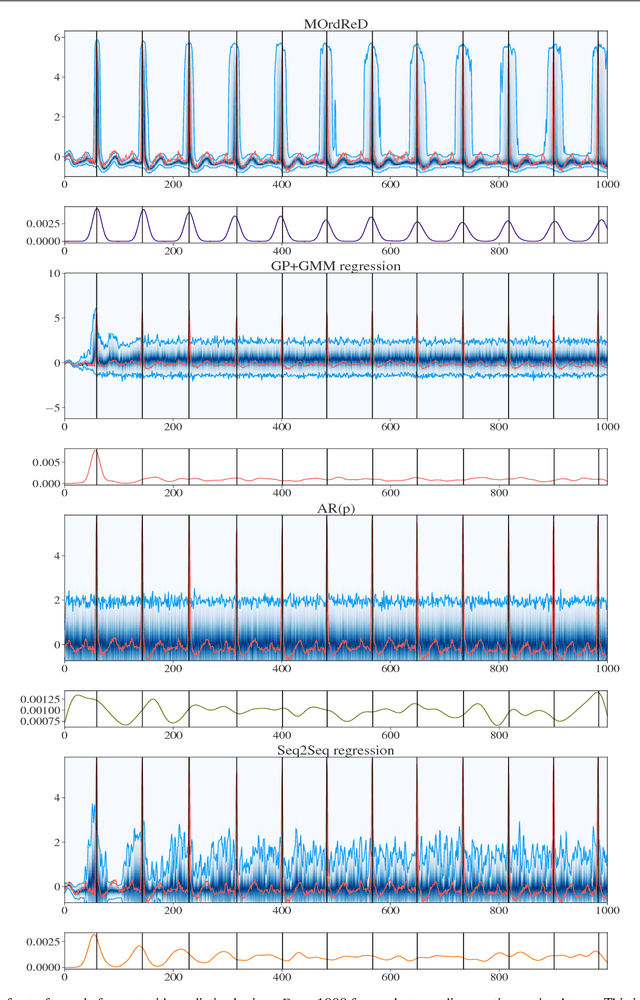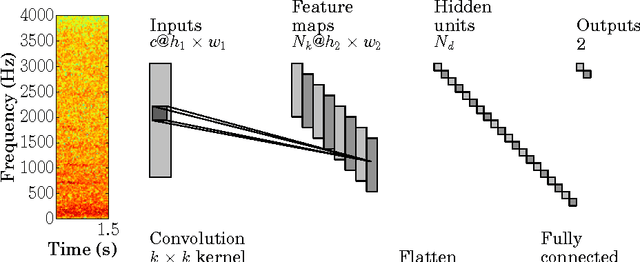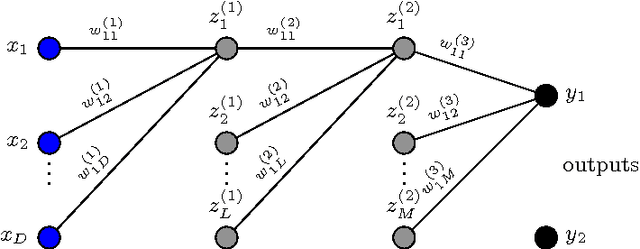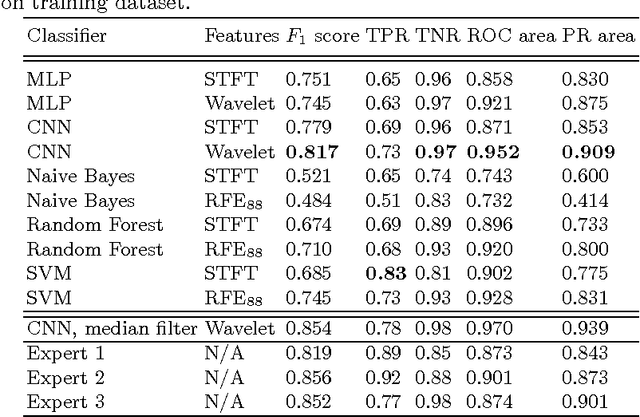Bernardo Pérez Orozco
Zero-shot and few-shot time series forecasting with ordinal regression recurrent neural networks
Mar 26, 2020


Abstract:Recurrent neural networks (RNNs) are state-of-the-art in several sequential learning tasks, but they often require considerable amounts of data to generalise well. For many time series forecasting (TSF) tasks, only a few dozens of observations may be available at training time, which restricts use of this class of models. We propose a novel RNN-based model that directly addresses this problem by learning a shared feature embedding over the space of many quantised time series. We show how this enables our RNN framework to accurately and reliably forecast unseen time series, even when there is little to no training data available.
MOrdReD: Memory-based Ordinal Regression Deep Neural Networks for Time Series Forecasting
Oct 24, 2018



Abstract:Time series forecasting is ubiquitous in the modern world. Applications range from health care to astronomy, and include climate modelling, financial trading and monitoring of critical engineering equipment. To offer value over this range of activities, models must not only provide accurate forecasts, but also quantify and adjust their uncertainty over time. In this work, we directly tackle this task with a novel, fully end-to-end deep learning method for time series forecasting. By recasting time series forecasting as an ordinal regression task, we develop a principled methodology to assess long-term predictive uncertainty and describe rich multimodal, non-Gaussian behaviour, which arises regularly in applied settings. Notably, our framework is a wholly general-purpose approach that requires little to no user intervention to be used. We showcase this key feature in a large-scale benchmark test with 45 datasets drawn from both, a wide range of real-world application domains, as well as a comprehensive list of synthetic maps. This wide comparison encompasses state-of-the-art methods in both the Machine Learning and Statistics modelling literature, such as the Gaussian Process. We find that our approach does not only provide excellent predictive forecasts, shadowing true future values, but also allows us to infer valuable information, such as the predictive distribution of the occurrence of critical events of interest, accurately and reliably even over long time horizons.
Mosquito Detection with Neural Networks: The Buzz of Deep Learning
May 15, 2017



Abstract:Many real-world time-series analysis problems are characterised by scarce data. Solutions typically rely on hand-crafted features extracted from the time or frequency domain allied with classification or regression engines which condition on this (often low-dimensional) feature vector. The huge advances enjoyed by many application domains in recent years have been fuelled by the use of deep learning architectures trained on large data sets. This paper presents an application of deep learning for acoustic event detection in a challenging, data-scarce, real-world problem. Our candidate challenge is to accurately detect the presence of a mosquito from its acoustic signature. We develop convolutional neural networks (CNNs) operating on wavelet transformations of audio recordings. Furthermore, we interrogate the network's predictive power by visualising statistics of network-excitatory samples. These visualisations offer a deep insight into the relative informativeness of components in the detection problem. We include comparisons with conventional classifiers, conditioned on both hand-tuned and generic features, to stress the strength of automatic deep feature learning. Detection is achieved with performance metrics significantly surpassing those of existing algorithmic methods, as well as marginally exceeding those attained by individual human experts.
 Add to Chrome
Add to Chrome Add to Firefox
Add to Firefox Add to Edge
Add to Edge